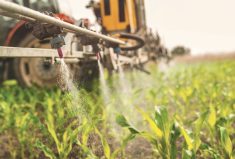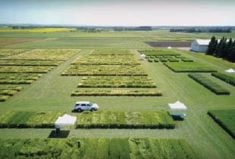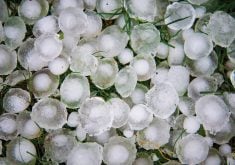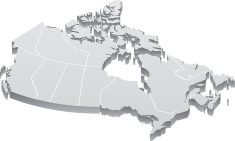The decision on whether to spray or not can be a difficult one for producers, says an Alberta Agriculture and Rural Development specialist, and the wrong decision can have serious financial consequences.
“Today’s farm business managers wear many different hats, and mycology and entomology may not be their area of expertise,” said research economist Nevin Rosaasen. “The decision to spray a fungicide or insecticide can be complex, and last-minute choices at spraying time stand a good chance of missing the mark.”
Determining the economic threshold on when it pays to spray is not as cut and dried as a simple insect count, a specified severity of infection rate, or basing the decision solely on the weather forecast, said Rosaasen. While all of these variables are important in making the most informed decision, the decision should ultimately be made based on profitability, and the best way to determine that is by using a partial budget, he said.
Read Also

Farming Smarter receives financial boost from Alberta government for potato research
Farming Smarter near Lethbridge got a boost to its research equipment, thanks to the Alberta government’s increase in funding for research associations.
“First, determine your farm-specific economic cost of spraying the pest that you are trying to control,” said Rosaasen. “Determining your costs is the left-hand side of the ledger of a partial budget and should include not only the cost of the pesticide, but all variable costs including fuel, time, labour of both the sprayer operator and water hauler. Fixed costs include depreciation on the sprayer, chemical handler, water truck, tanks, etc. Divide these by all the acres that you spray over the estimated lifetime of these assets to give you a rough fixed cost per acre.
“Knowing what it costs you to spray is essential before evaluating the potential benefit, loading up the sprayer and hitting the field.”
On the direct-benefit side of the partial budget, evaluate how the decision to spray may affect yield.
“Factors to consider include the expected yield savings and price of the crop you are protecting (use realistic yield estimates and conservative estimates for price),” he said. “You may also want to net off the crop lost from compaction and tramping — roughly two per cent crop loss on 100-foot booms.
“The net of these gives insight into the ‘direct’ profitability of spraying pests. If it is negative, here is where you stop. If you have defined a threshold, you would know where you would start.”
Even when the numbers are right, there are other considerations, Rosaasen added.
“Understanding that your field is a complex ecosystem, that, when shocked with a fungicide or insecticide, may have unintended consequences on beneficial insects or fungi and subsequent infestation levels, is key,” he said.
“When infestation rates and benefits of spraying outweigh the costs, producers need to act to protect their profitability. However, when you find that deciding to spray or not to spray is based on costs and benefits being nearly even, letting nature run its course may have longer-term net benefits for your integrated pest management and ultimately, your longer-term profitability.”















